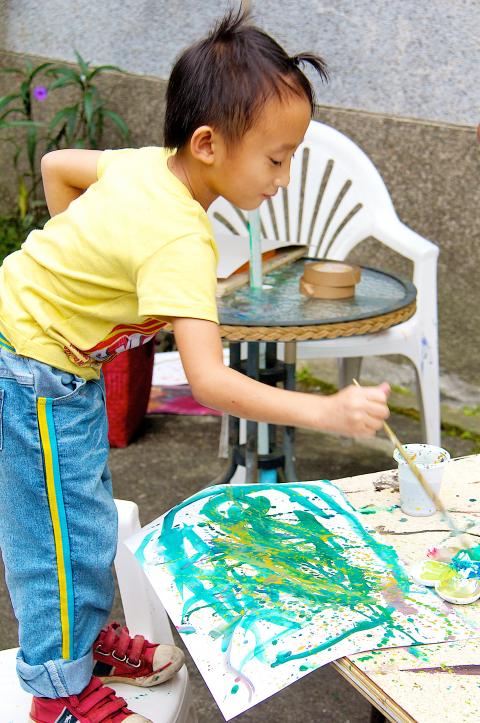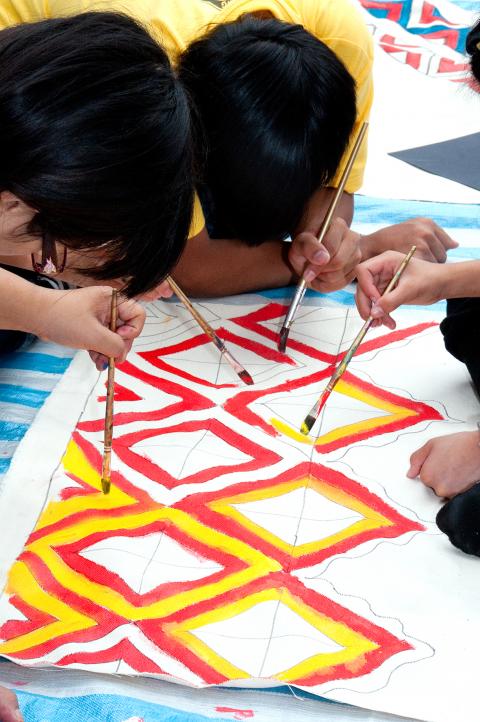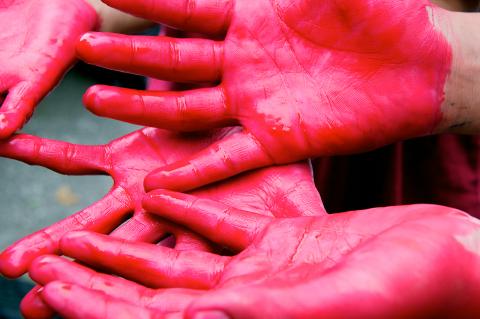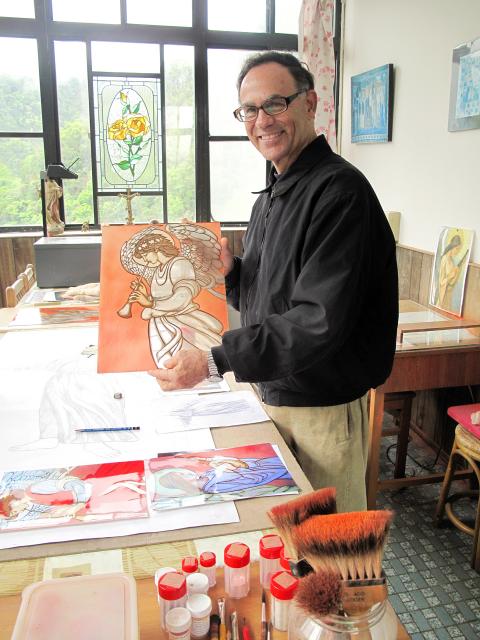The village of Cingcyuan (清泉, clear springs), located in the mist-shrouded hills of Wufeng (五峰) Township in Hsinchu County, clings precariously to steep slopes on both sides of a verdant valley, through which a sparkling river noisily tumbles on its way to the plains far below.
Here live a small group of Aborigines of the Atayal people, as they have done for centuries, and who are known for their hunting prowess. These skills, like much of their rich culture, have largely been lost under the oppressive rule of different colonizers and the indifference of successive governments, which has left them poverty-stricken.
Although a greater sense of their cultural identity has been restored to the people of Cingcyuan in the past three decades through the efforts of churches, volunteers, schools and some government workers, it is clear to the first-time visitor that this village, like so many others in Aboriginal areas, has been neglected by the authorities and that its inhabitants have few opportunities to earn a decent living, develop their talents and work to secure a future.

Photo courtesy of Nick Kembel
It is against this backdrop that the Wufong Project (五峰計畫進展史) was born. Aptly subtitled Restoring Hope, the community project is the brainchild of its founder Malinda Schultz. Her collaboration with Father Barry Martinson, a Jesuit priest and 37-year resident of Cingcyuan, has resulted in a new community activity center, standing where a derelict building that used to house a long-defunct credit cooperative once sagged.
Their ongoing efforts to help the children of the village, and indirectly the community, are an example of what can be achieved when people work hard to help others, instead of waiting for government authorities to act and serve the people.
Schultz said on a recent visit to the village that she discovered the beauty of the area and its people on a chance visit a few years ago. A performance by an Atayal children’s choir struck a chord deep within her and she became inspired to act to help improve the lot of the populace.

Photo courtesy of Johnathan Burke
Her first aim was to help the children there, as they had little education and some had drifted into drug and alcohol abuse, while the poverty-stricken, isolated village offered them little opportunity to succeed.
The goal, Schultz said, was to boost the children’s confidence by showing them that they can achieve something through hard work. This she proposed to do by teaching them art and developing their creativity.
Schultz approached Father Barry, who as resident priest at the Catholic Church has for years played a leading role in the community and has worked extensively with the youth.

Photo courtesy of Nick Kembel
They agreed to start raising funds to build a community center as a safe gathering and learning place.
Schultz proceeded to gather a group of volunteer artists, writers and photographers to guide the children through three art workshops. Here the children learnt to take photographs and create artworks, which were sold at a massively successful auction in October 2011. Through the auction and a large donation by a wealthy family who were inspired by the project, they raised the NT$2.1 million needed to start construction of the center.
“The most wonderful thing was the expression on the children’s faces when they saw the amount of money bidders were paying for their artwork,” Schultz said.

Photo courtesy of Carina Koen
“A very deep thing has been planted with this project. These children now realize that they have a leadership role to play in their community. They have been energized by the success of the project,” she said
At this stage the project came close to getting derailed, as the unused, derelict credit cooperative building where they had started the building process was, unbeknownst to them, on land belonging to the local government.
The authorities tried to stop construction because the defunct credit cooperative was deeply in debt, among other things. However, Father Barry, who is an accomplished artist in his own right, forged ahead and sold many of his personal paintings and his stained-glass, at auction — a process he said was at times deeply emotional, but also spiritual.
Through his efforts Father Barry managed to raise enough funds to pay off the credit cooperative’s debt and secure the land for the center.
“It was a miracle,” he says.
The center was inaugurated in late November last year and now provides a safe space where the children of Cingcyuan can learn about their heritage.
Resident Atayal teacher Laling instructs the children on different aspects of their culture, including teaching them the traditional art of hunting and traditional Atayal songs, as well as the Atayal language.
“We need more volunteers to help teach our children. Anybody who can lend a hand is welcome,” Laling says, as he hurriedly disappears into the center with three of his charges in tow, ready to present an Atayal vocabulary lesson to an eager and appreciative audience.
For more information on the project, including volunteering opportunities, please visit the Wufong Project Web site at: thewufongproject.wordpress.com.

On April 26, The Lancet published a letter from two doctors at Taichung-based China Medical University Hospital (CMUH) warning that “Taiwan’s Health Care System is on the Brink of Collapse.” The authors said that “Years of policy inaction and mismanagement of resources have led to the National Health Insurance system operating under unsustainable conditions.” The pushback was immediate. Errors in the paper were quickly identified and publicized, to discredit the authors (the hospital apologized). CNA reported that CMUH said the letter described Taiwan in 2021 as having 62 nurses per 10,000 people, when the correct number was 78 nurses per 10,000

As we live longer, our risk of cognitive impairment is increasing. How can we delay the onset of symptoms? Do we have to give up every indulgence or can small changes make a difference? We asked neurologists for tips on how to keep our brains healthy for life. TAKE CARE OF YOUR HEALTH “All of the sensible things that apply to bodily health apply to brain health,” says Suzanne O’Sullivan, a consultant in neurology at the National Hospital for Neurology and Neurosurgery in London, and the author of The Age of Diagnosis. “When you’re 20, you can get away with absolute

May 5 to May 11 What started out as friction between Taiwanese students at Taichung First High School and a Japanese head cook escalated dramatically over the first two weeks of May 1927. It began on April 30 when the cook’s wife knew that lotus starch used in that night’s dinner had rat feces in it, but failed to inform staff until the meal was already prepared. The students believed that her silence was intentional, and filed a complaint. The school’s Japanese administrators sided with the cook’s family, dismissing the students as troublemakers and clamping down on their freedoms — with

As Donald Trump’s executive order in March led to the shuttering of Voice of America (VOA) — the global broadcaster whose roots date back to the fight against Nazi propaganda — he quickly attracted support from figures not used to aligning themselves with any US administration. Trump had ordered the US Agency for Global Media, the federal agency that funds VOA and other groups promoting independent journalism overseas, to be “eliminated to the maximum extent consistent with applicable law.” The decision suddenly halted programming in 49 languages to more than 425 million people. In Moscow, Margarita Simonyan, the hardline editor-in-chief of the